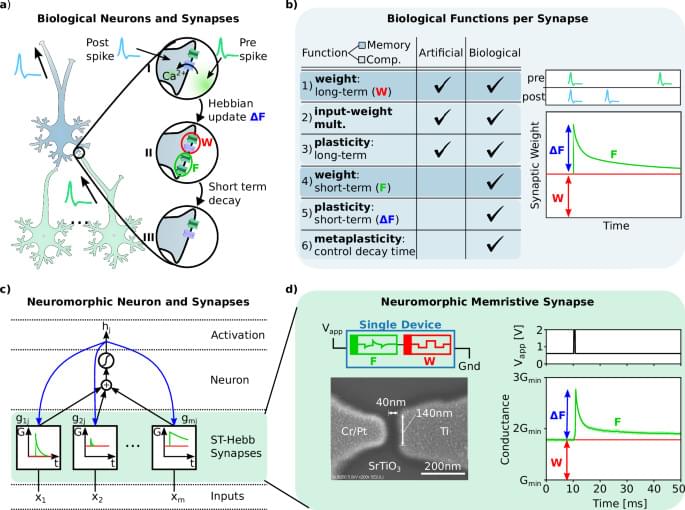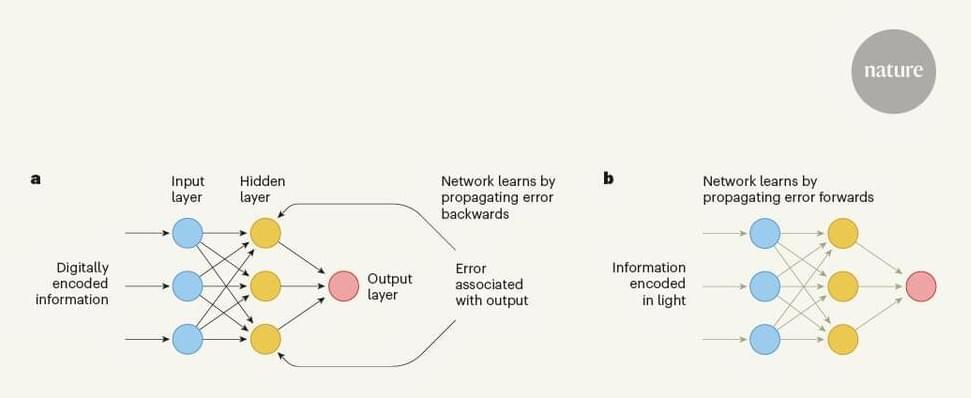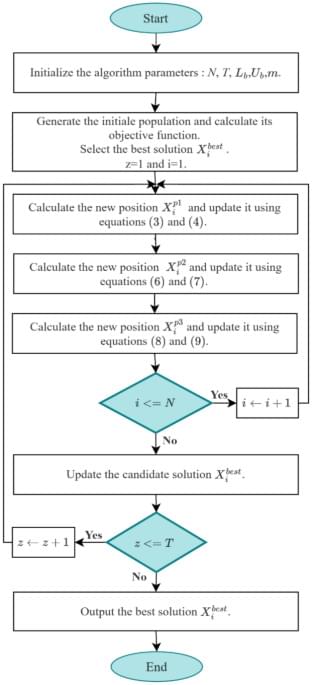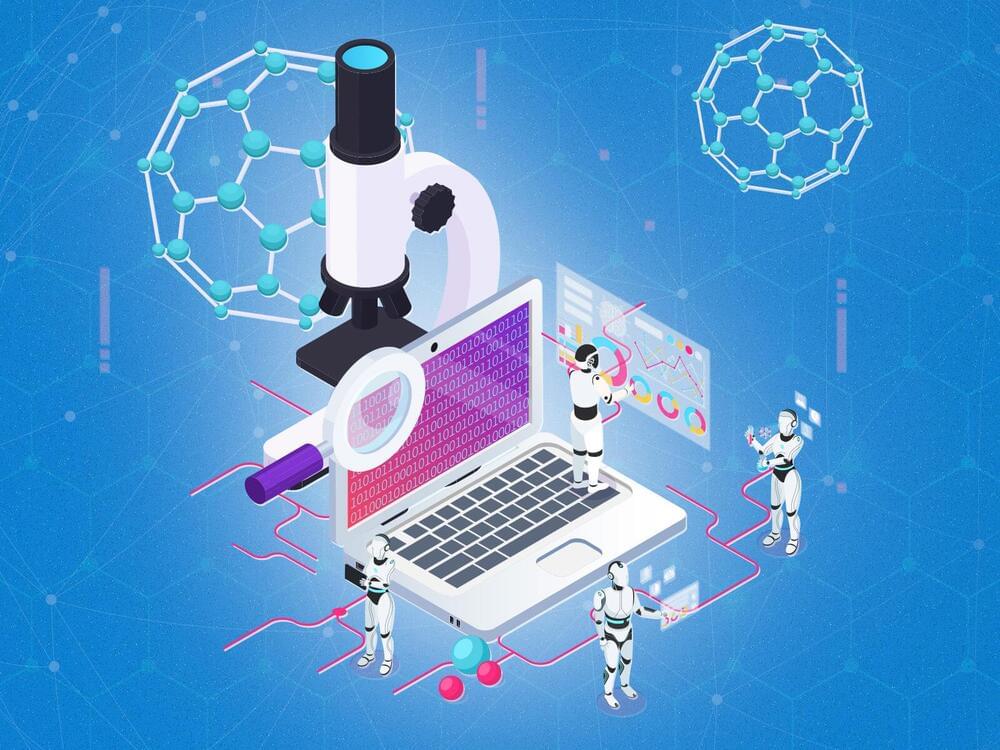A pseudo-religion dressed up as technoscience promises human transcendence at the cost of extinction.



Biological neural networks demonstrate complex memory and plasticity functions. This work proposes a single memristor based on SrTiO3 that emulates six synaptic functions for energy efficient operation. The bio-inspired deep neural network is trained to play Atari Pong, a complex reinforcement learning task in a dynamic environment.


The Driving Training Based Optimization (DTBO) algorithm, proposed by Mohammad Dehghani, is one of the novel metaheuristic algorithms which appeared in 202280. This algorithm is founded on the principle of learning to drive, which unfolds in three phases: selecting an instructor from the learners, receiving instructions from the instructor on driving techniques, and practicing newly learned techniques from the learner to enhance one’s driving abilities81,82. In this work, DTBO algorithm is used, due to its effectiveness, which was confirmed by a comparative study83 with other algorithms, including particle swarm optimization84, Gravitational Search Algorithm (GSA)85, teaching learning-based optimization, Gray Wolf Optimization (GWO)86, Whale Optimization Algorithm (WOA)87, and Reptile Search Algorithm (RSA)88. The comparative study has been done using various kinds of benchmark functions, such as constrained, nonlinear and non-convex functions.
Lyapunov-based Model Predictive Control (LMPC) is a control approach integrating Lyapunov function as constraint in the optimization problem of MPC89,90. This technique characterizes the region of the closed-loop stability, which makes it possible to define the operating conditions that maintain the system stability91,92. Since its appearance, the LMPC method has been utilized extensively for controlling a various nonlinear systems, such as robotic systems93, electrical systems94, chemical processes95, and wind power generation systems90. In contrast to the LMPC, both the regular MPC and the NMPC lack explicit stability restrictions and can’t combine stability guarantees with interpretability, even with their increased flexibility.
The proposed method, named Lyapunov-based neural network model predictive control using metaheuristic optimization approach (LNNMPC-MOA), includes Lyapunov-based constraint in the optimization problem of the neural network model predictive control (NNMPC), which is solved by the DTBO algorithm. The suggested controller consists of two parts: the first is responsible for calculating predictions using a neural network model of the feedforward type, and the second is responsible to resolve the constrained nonlinear optimization problem using the DTBO algorithm. This technique is suggested to solve the nonlinear and non-convex optimization problem of the conventional NMPC, ensure on-line optimization in reasonable time thanks to their easy implementation and guaranty the stability using the Lyapunov function-based constraint. The efficiency of the proposed controller regarding to the accuracy, quickness and robustness is assessed by taking into account the speed control of a three-phase induction motor, and its stability is mathematically ensured using the Lyapunov function-based constraint. The acquired results are compared to those of NNMPC based on DTBO algorithm (NNMPC-DTBO), NNMPC using PSO algorithm (NNMPC-PSO), Fuzzy Logic controller optimized by TLBO (FLC-TLBO) and optimized PID controller using PSO algorithm (PID-PSO)95.

This post marks my 22nd for Evolution News in as many months. I began by advocating that the notion of purpose be established as a scientific concept. I hope that the reasons I have offered over the past two years have been convincing.
I ended my last post with what many would consider a radical claim. That is, we must further recognize, on the basis of powers ontology, aka dispositionalism, that the living state undeniably manifests the power of purpose, and that this can only come from its immanent property of intentionality.
Purpose and intentionality permeate and in fact define the living state, in contrast to the inanimate. If you dissect any organism or any cell or any organelle within any cell or organism you will only find parts that contribute to the function of the whole. One might even say that within life, there is nothing else except purpose.

Jim Clarke, Director of Quantum Hardware at Intel Labs, discusses how chemistry and physics drive the development of qubits in these unique systems. These systems will bring mind-blowing computing power to the world in the next decade and beyond.
Subscribe now to Intel on YouTube: https://intel.ly/3IX1bN2
About Intel:
Intel, the world leader in silicon innovation, develops technologies, products and initiatives to continually advance how people work and live. Founded in 1968 to build semiconductor memory products, Intel introduced the world’s first microprocessor in 1971. This decade, our mission is to create and extend computing technology to connect and enrich the lives of every person on Earth.
Connect with Intel:
Visit Intel WEBSITE: https://intel.ly/Intel.
Follow Intel on X: https://intel.ly/Twitter.
Follow Intel on INSTAGRAM: https://intel.ly/Instagram.
Follow Intel on LINKEDIN: https://intel.ly/LinkedIn.
Follow Intel on TIKTOK: https://intel.ly/TikTok.
How quantum computing will change our world | Intel.
/ intel.

With inventions like a nanomaterial-based battery for IoT and nanoscale transistors, the future of nanotechnology in this field seems to have potential. For now, any large-scale applications are likely years away. Companies must overcome technical, cost, and implementation hurdles before progressing to mass-market applications.
However, numerous nanoscale-sized discoveries and inventions will likely emerge in the coming years. As the value of nanotechnologies and IoT continue increasing, more investors, business owners, and researchers will explore possible use cases. While their inventions may not hit shelves for years, their development speed will surely accelerate.

